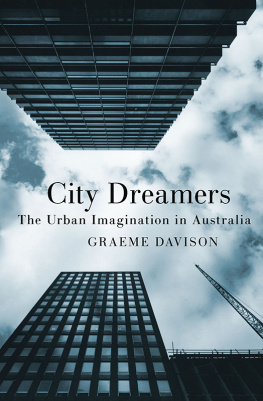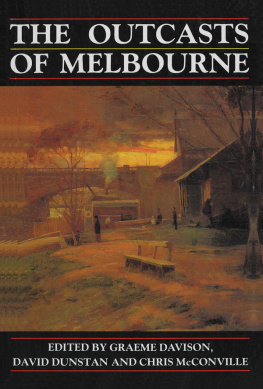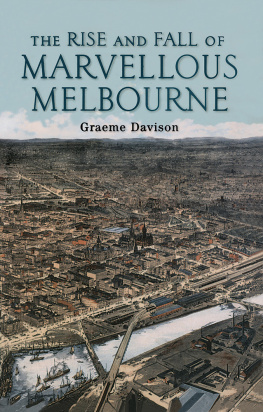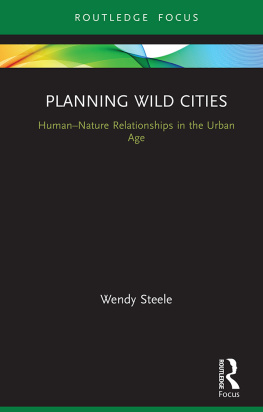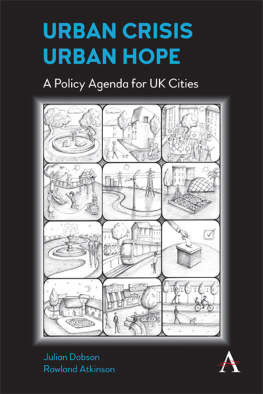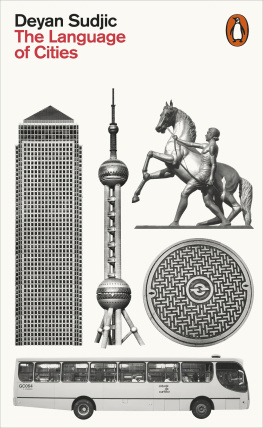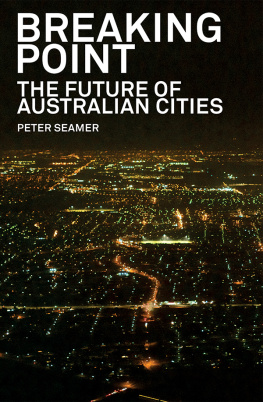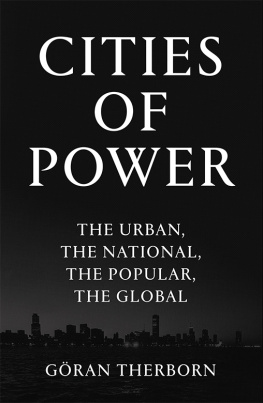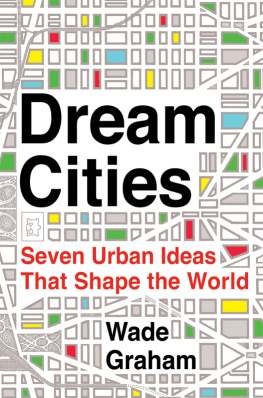ACKNOWLEDGMENTS
This book builds on many years of research and several previously published essays, which I list below. I am indebted to many friends and colleagues for ideas, hints on sources, and criticism too many to list them all. I wish, however, to make specific acknowledgment of David Dunstan, with whom I wrote an earlier version of chapter 3, and the late John Hirst who kindly read the Introduction and commented on the plan of the book.
The View from the Palisade Hotel, Meanjin, vol. 65, no. 2, 2006, pp. 96107.
The Panorama and the Printing Press in Susan Hunt (ed.), Sydney Views 17881888 from the Beat Knoblauch Collection, Historic Houses Trust, Sydney 2007, pp. 1423.
The Unsociable Sociologist: W.S. Jevons and his survey of Sydney, 18568, Australian Cultural History, no. 16, 199798, pp. 127150.
This Moral Pandemonium: images of low life in Graeme Davison, David Dunstan and Chris McConville, The Outcasts of Melbourne, Allen and Unwin 1983, pp. 2957 (with David Dunstan).
R.E.N. Twopeny and Town Life in Australia, Historical Studies, vol. 16, no. 63, October 1974, pp. 292305.
The Suburban Idea and its Enemies, Journal of Urban History, vol. 20, no 10, September 2013, pp. 119.
Sydney and the Bush: an urban context for the Australian Legend, Historical Studies, vol. 18, no. 71, Oct. 1978, pp. 191209.
Country Life: The Rise and Decline of an Australian Ideal in Marc Brodie and Graeme Davison (eds), Struggle Country: The rural ideal in twentieth century Australia, Monash ePress 2005, pp. 115.
The Exodists: Miles Franklin, Jill Roe and the Drift to the Metropolis in Twentieth Century Australia, History Australia, vol. 2, no. 2, July 2005, pp. 111.
The City-Bred Child and Urban Reform in Melbourne, 19001940 in Peter Williams (ed.), Social Process and the City, Urban Studies Yearbook, 2, Allen and Unwin, Sydney 1983, pp. 143174.
Images of Modern Melbourne, 19451970, Journal of Australian Studies, Number 57, June 1998, pp. 145161.
The European City in Australia, Journal of Urban History, vol. 27, no. 6, September 2001, pp. 779793.
City Dreaming, Griffith Review, April 2016.
For permission to reproduce illustrations, I gratefully acknowledge the following:
Mr Beat Knoblauch, Barangaroo Authority, State Library of Victoria, Sydney Living Museums and the National Library of Australia.
AFTERWORD
City Dreaming
White man got no dreaming
Him go nother way
White man him go different.
Him got road belong himself.
These words, spoken by an old Aboriginal man to the anthropologist W.E.H. Stanner more than six decades ago, still resonate in the Australian imagination. There is pity in the speakers words and wistfulness in Stanners as he recalls them. In following his own road, the white man has missed a better way: the mysterious Aboriginal mans knowledge he called Dreaming. Dreaming, Stanner explains in his famous essay, is not just a mythical world located in a distant past, but a living force that operates in the here and now. It defies the pervasive binaries of Western thought present/past, nature/culture, sacred/ profane testifying instead to a deep abidingness, manifest in the intimate relationship between Indigenous people and their land. No English words are good enough to give a sense of the link between an Aboriginal group and its homeland, Stanner later wrote. The Dreaming expresses a belonging beyond the white mans ability to understand or attain.
The white man had his own dreams, of course, but they were different. He dreamt of great cities rising from the earth or as in the last book of his Bible descending from heaven. These dreams were located in the future, or perhaps in a mythic past, but they were not timeless, like the Aborigines dreams. When the British first settled the land, Erasmus Darwin dreamed of the tall spires and dome-capped towers that would one day rise on the shores of Botany Bay. At the high noon of Empire, homesick colonists sang of building a New Jerusalem in Englands green and pleasant land. Even in my own youth we prayed, in the words of another popular hymn, that our countrys cities should be cleansed from the deeds of darkness Cities of Light. Like the founders of New England, who imagined Boston, in the biblical metaphor, as a City on a Hill, Australias city dreamers yearned to rise above the land, not simply to abide in it. They not only dreamed, but they believed that their dreams could come true.
The dreamers the artists and scientists, engineers and planners, motorists and modernisers, suburbanites and anti-suburbanites, nationalists and cosmopolitans we have met in this book were heirs to a long tradition in Western thought. From the Hebrew Bible and the Greek philosophers through the Heavenly City of St Augustine to the nineteenth-century utopians, the good society was imagined as a city. It was there that human creativity reached its peak and political action found its noblest expression. Building cities is far the most difficult, complex and majestic thing that men do, declared Gough Whitlam, echoing the ideals of city dreamers from Pericles and Cicero to Lewis Mumford and Jane Jacobs.
Dreaming inspired hope and gave direction to the dreamers efforts for human betterment. Because most dreams dont actually come true, the dreamers were often left lamenting the gap between the ideal and the real. Paradoxically, the closer the dream came to reality, the more unreal it often seemed. The rise of Marvellous Melbourne from wilderness to proud metropolis in only fifty years left its citizens dazed with disbelief. The cantata composed for the citys biggest birthday party, the 1888 Centennial Exhibition, posed the rhetorical question:
Where the spotted snake crawled by the stream
See the spires of the great city gleam,
Is it all but the dream of a dream?
The white man had seemingly triumphed yet he remained ill at ease. He had possessed the land, and built his cities, but he was not at home.
In 1943, the young Manning Clark, who had recently returned to Australia, posed a profound question. Civilised life with us is artificial, he wrote. We must ask the dreadful question: do we belong here? Civilised life the life of the Australian city seemed foreign, not indigenous; shallow-rooted, not primordial. Clark was echoing the long line of colonial observers, reviewed earlier in the introduction, who dismissed Australias cities as the habitation of second-hand Europeans. He knew that he did not belong there, in the Europe he had recently fled. It was not that Australia still belonged to the Aborigines, either, although the way in which they had been dispossessed troubled him. At the root of his question was the belief that the soul of a people comes from a homeland with its age-old tradition of songs and stories. How could Australia, a recently settled, culturally derivative, and largely urban society, have a soul without such a deep connection to the soil? When Stanner wistfully described the Dreaming, such thoughts may not have been far from his mind.
When Clark asked his dreadful question, some of his friends, members of the Communist Party inspired by Stalins revival of Russian folk culture, were busily collecting the songs and stories of the swagmen and shearers of the Australian Bush, the nearest they could find to an Australian folk culture. In the poems and stories of Henry Lawson and Joseph Furphy, they found traces of a binding national myth, the code of mateship.
The Bush myth dies hard, but it dies all the same. Long after most had left the farms and small towns for the big cities, Australians continued to look inland, across the Divide, towards the true or real Australia. Its charm increased with distance, both geographical and temporal. In his recent elegy for
Next page
